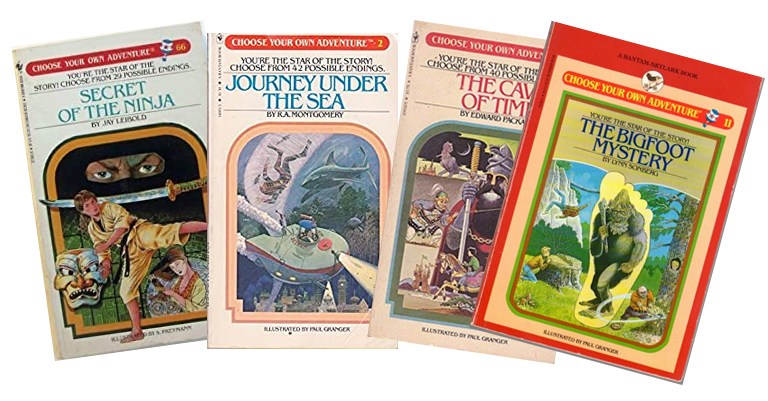When writing website copy, think about how your user will navigate around your website to find your content and learn your story.
Remember those “Choose Your Own Adventure Books” in Elementary or Middle School? They had the big red banner on the top, with a white cover and usually some sort of brightly colored illustration. I loved those as a kid, they allowed you to make choices in a story that was otherwise linear.
I used those books as an analogy for a new client recently. They were launching a new business and, they actually supplied a lot of their copy for their new website. What they do, their background, why you may want to work with them, etc. It was all written well, and in a narrative form, the way you may tell someone the story of your business in a conversation, assuming the other person isn’t interrupting with various questions.
But that’s not how users engage with your website, they don’t follow a specific path you want them to. Often times visitors are impatient and just start scrolling. They scan for information relevant to their search, click around to pages that may look compelling.
I asked this client to think about their website as a Choose Your Own Adventure book where your visitors will make decisions about how they engage with your site. You want to have relevant information on every page. And you want to make sure there are no dead ends. Provide them with clear CTA’s (calls to action) so they don’t end up with one of those dreaded “The End” pages if they ran in to a dead end in a Choose Your Own Adventure novel.

Your web copy can be like a choose-your-own-adventure book in that it allows readers to choose their own path through your website. A choose-your-own-adventure book typically presents readers with a series of choices and asks them to choose which direction the story should take. Similarly, your web copy can be designed to guide readers through your website by presenting them with choices and allowing them to choose which direction they want to go.
Here are some ways that your web copy can be like a choose-your-own-adventure book:
- Navigation: Your website’s navigation can be structured like a choose-your-own-adventure book, with different options presented to readers at various points in their journey. For example, you might have a homepage that presents readers with a series of choices, such as “Learn more about our company,” “Explore our products,” or “Contact us.”
- Interactivity: Like a choose-your-own-adventure book, your web copy can be interactive and engaging, encouraging readers to explore and interact with your website. This might include features like quizzes, polls, or surveys that allow readers to provide feedback and engage with your brand.
- Personalization: Your web copy can be personalized to each reader’s interests and needs, offering them a customized experience that is tailored to their preferences. For example, you might use data on a reader’s previous interactions with your website to recommend content or products that are likely to be of interest to them.
- Storytelling: Finally, like a choose-your-own-adventure book, your web copy can use storytelling to engage readers and create a sense of immersion. By creating a compelling narrative that guides readers through your website, you can capture their attention and keep them engaged with your brand.
By incorporating these elements into your web copy, you can create a choose-your-own-adventure-style experience that engages readers and helps them to explore your brand in a way that is interactive, personalized, and engaging.

